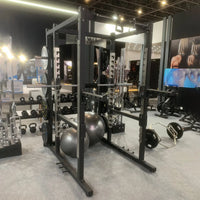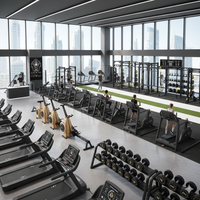As we cross the 40-year mark, the term "anti-aging fitness" shifts from being about looking good to being about maintaining long-term function, health, and independence. While cardio is important, the true foundation for longevity is built with heavy, compound movements—and nothing delivers more comprehensive anti-aging benefits than the barbell squat and deadlift.
These two lifts are not just for powerlifters; they are your most potent prescription for combating the four major physiological declines of aging: Sarcopenia (muscle loss), Osteoporosis (bone loss), Metabolic slowdown, and loss of functional strength/power.
1. The Anti-Aging Power of Squats and Deadlifts
Squats and deadlifts are compound movements, meaning they engage multiple joints and large muscle groups simultaneously. This is the key to their superior benefit:
A. Combating Sarcopenia (Muscle Loss)
-
The Problem: After age 30, muscle mass begins a steady decline (sarcopenia), which accelerates after 50.3 Muscle is metabolically active tissue, and losing it slows your metabolism, making fat gain easier.
-
The Solution: Squats and deadlifts involve the largest muscles in the body (glutes, quads, hamstrings, back, core).5 Lifting a heavy barbell signals your body to maintain and build muscle far more effectively than isolation exercises. This preserves your resting metabolic rate and helps manage weight.
B. Reversing Osteoporosis (Bone Loss)6
-
The Problem: Declining hormones (like estrogen in women and testosterone in men) lead to a rapid loss of Bone Mineral Density (BMD), dramatically increasing the risk of fracture from falls.
-
The Solution: Squats and deadlifts are axial loading exercises—they place significant, controlled force down through the spine, hips, and legs. This mechanical stress is the strongest known stimulus for signaling bone cells to grow denser and stronger. Strong bones are your ultimate insurance against fragility in old age.
C. Boosting Functional Strength & Power
-
The Problem: The first physical skill we lose with age is power (the ability to move weight quickly), which is critical for preventing falls, such as catching yourself or reacting quickly.
-
The Solution: These lifts directly translate to real life:
-
Squat: Mimics sitting down and standing up (rising from a low chair, using the toilet).
-
Deadlift: Mimics picking a heavy object off the floor (a suitcase, a grandkid, grocery bags) safely.
-
By reinforcing these natural human movement patterns under load, you maintain the functional capacity needed to live independently.
-
D. Supporting Hormone Health and Metabolism
-
The Problem: After 40, levels of crucial hormones (Growth Hormone, Testosterone) can decline, affecting recovery and well-being.10
-
The Solution: The sheer amount of muscle tissue activated by heavy squats and deadlifts is associated with a greater acute hormonal response, which aids in recovery, tissue repair, and overall vitality. Furthermore, improving muscle mass enhances insulin sensitivity, reducing the risk of Type 2 diabetes and metabolic syndrome.
2. Safety First: Essential Tips for Lifting After 40
While the benefits are immense, the focus after 40 must shift from chasing one-rep maxes to consistency and impeccable form.
| Focus Area | Anti-Aging Strategy |
| Form is Non-Negotiable | Never sacrifice form for weight. Hire an experienced coach for a few sessions to verify your technique. Use video recording to check your own form regularly. |
| Prioritize the Warm-Up | Dedicate 10–15 minutes to a dynamic warm-up that includes mobility drills for the hips, ankles, and thoracic spine. Your joints need more preparation time than they did in your 20s. |
| Embrace Variations | If barbell lifts cause joint discomfort, use variations that offer similar benefits with less stress: |
| Squat Alternatives: Goblet Squats, Box Squats, Safety Bar Squats. | |
| Deadlift Alternatives: Trap Bar Deadlifts (excellent for back safety), Romanian Deadlifts (RDLs), Rack Pulls. | |
| Manage Frequency & Volume | Do not perform maximal lifts every week. Focus on moderate rep ranges (5-10 reps) with challenging but controlled weights. Consider reducing the frequency of heavy spinal-loading days to 1-2 times per week. |
| Auto-Regulate | Listen to your body. If a joint aches, lower the weight or switch the exercise. A minor modification today prevents a multi-week injury tomorrow. |
Barbell squats and deadlifts, when performed with intelligence and caution, are unparalleled tools for ensuring you are not just living longer, but living stronger and more capable for decades to come. They are your investment in a powerful, independent future.




0 comments